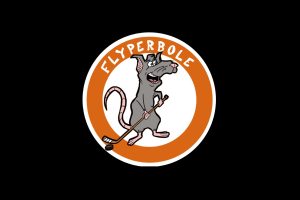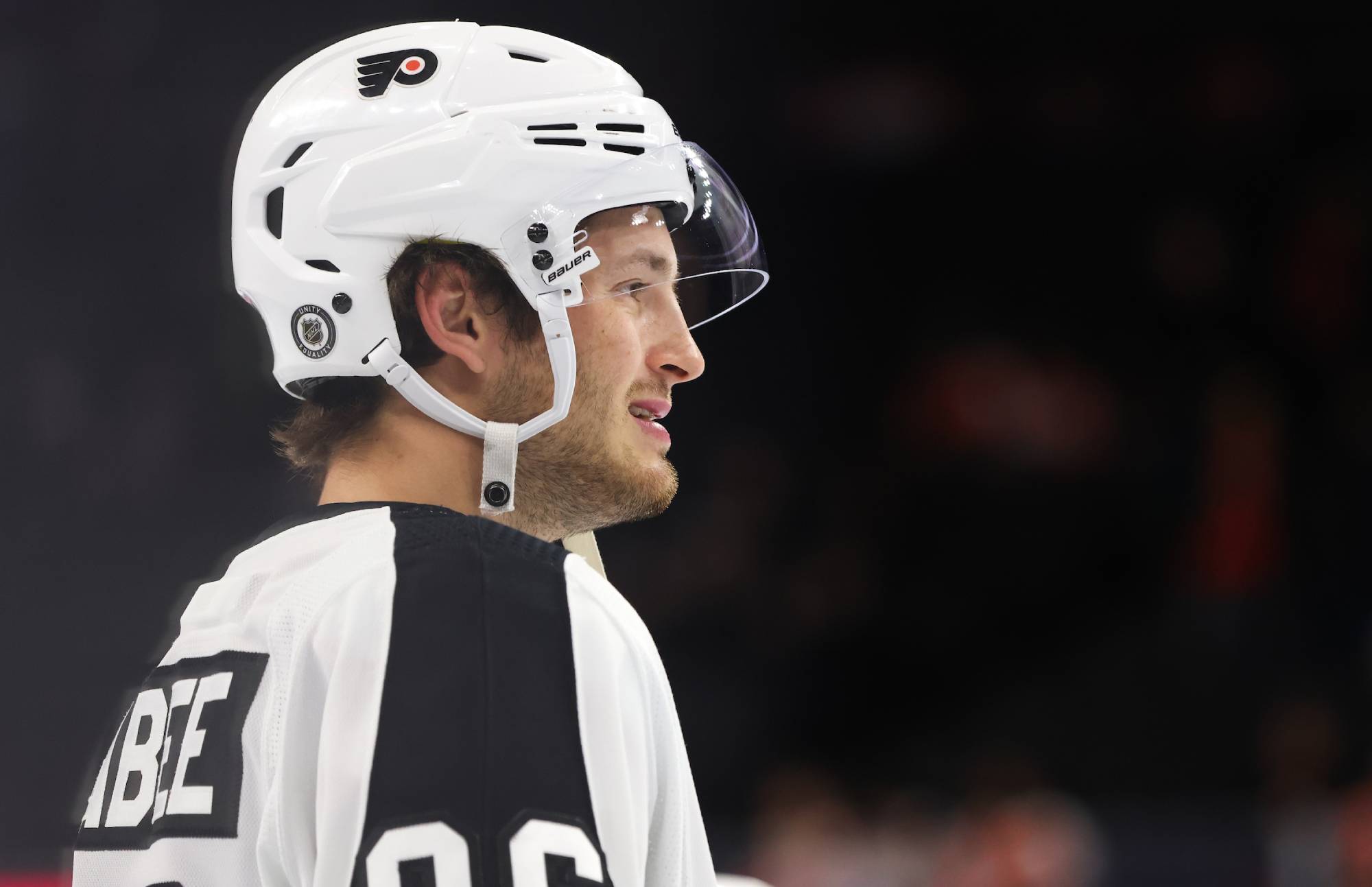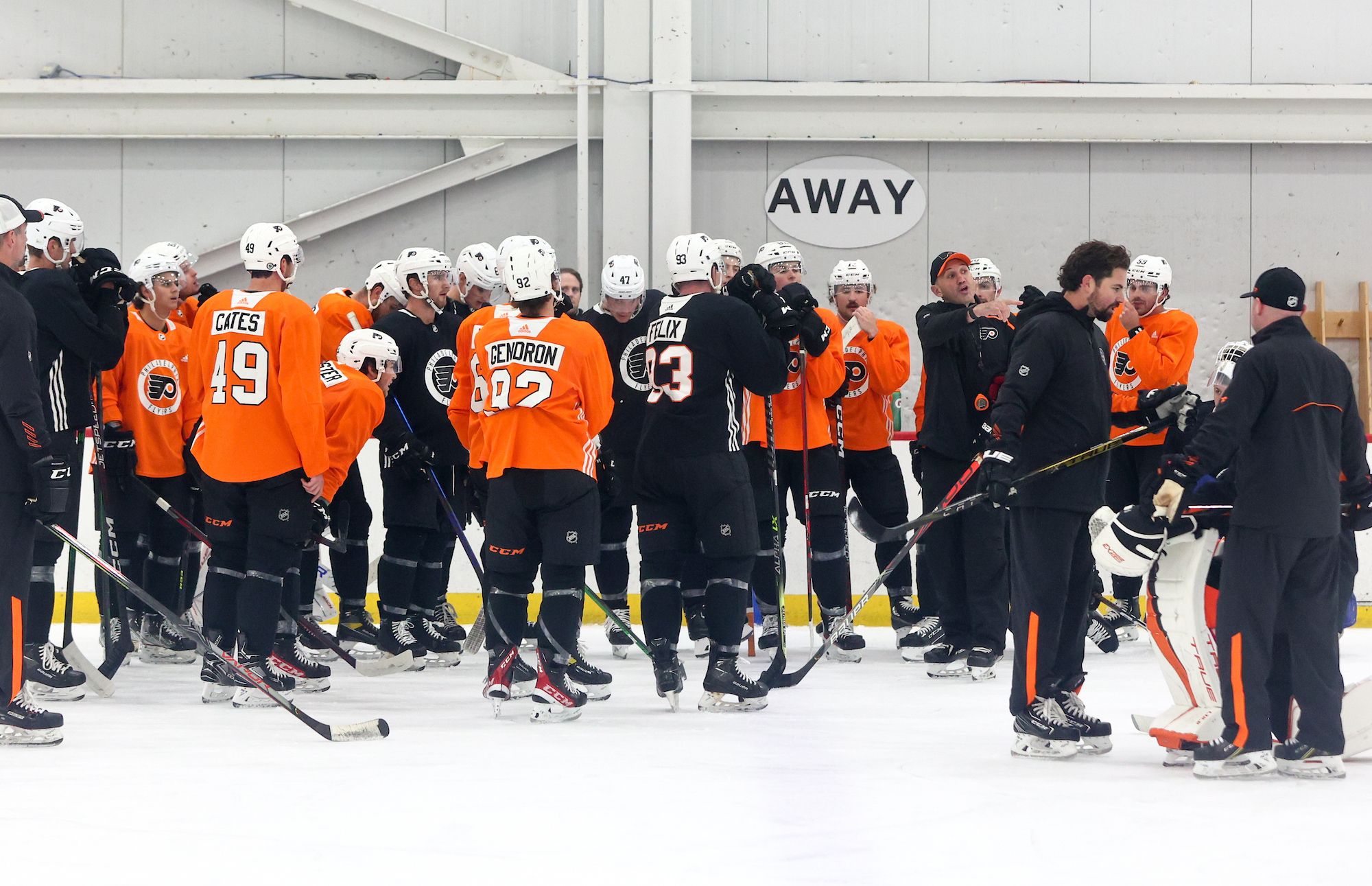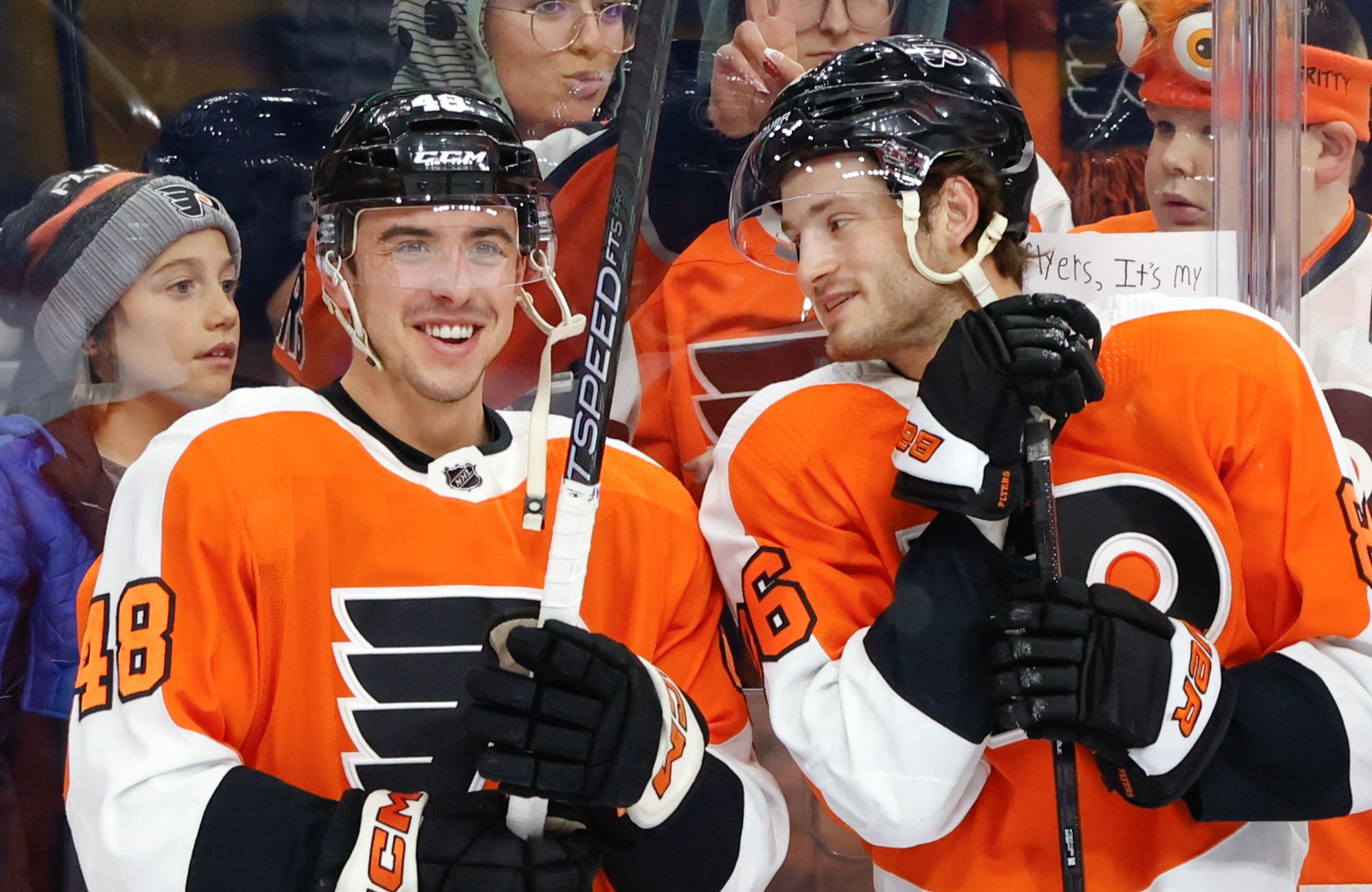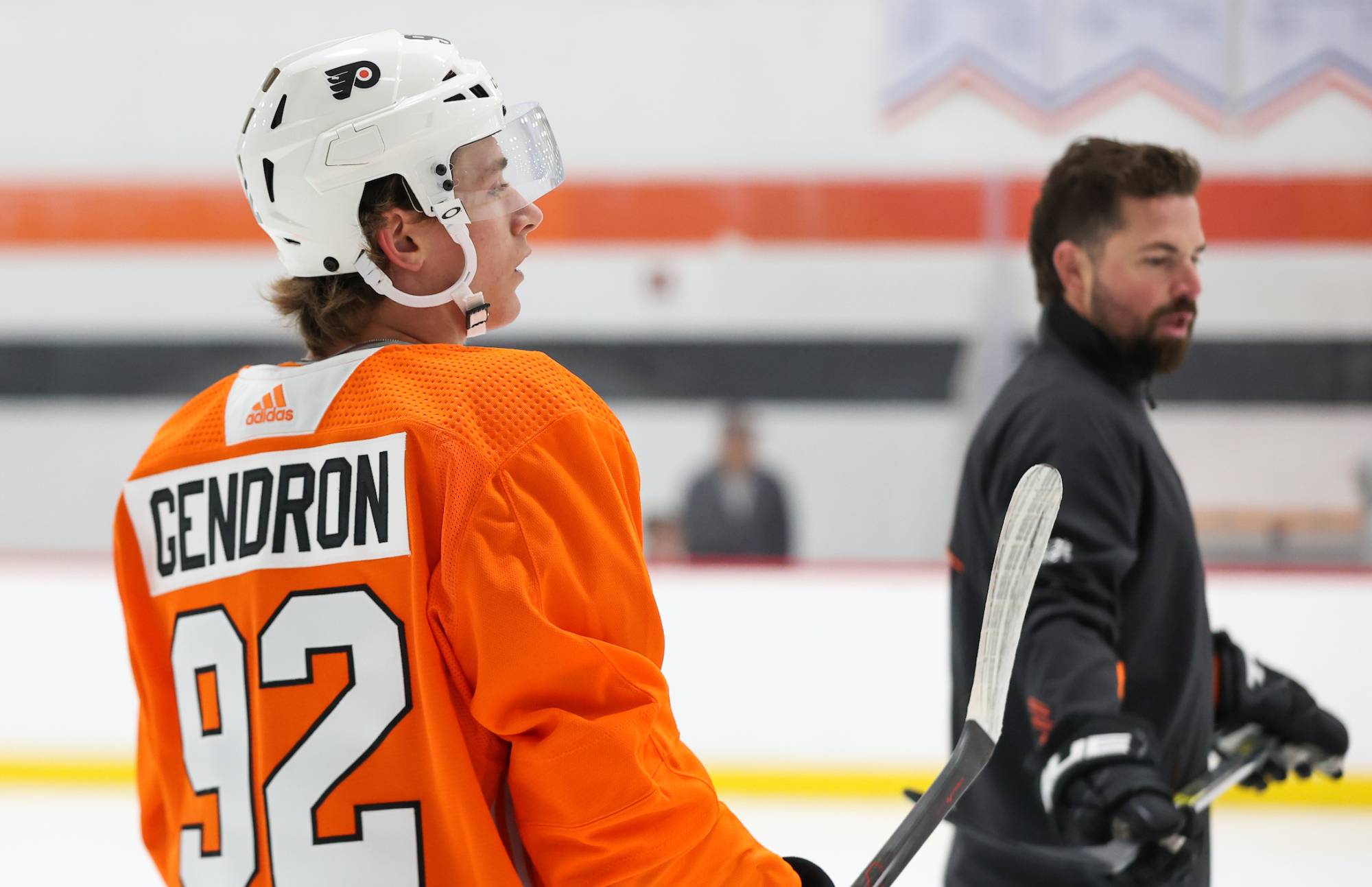Morning Observations is a feature where we break down the previous night’s game with an analytical eye.
#1: Power play saved Flyers from defeat
The advanced metrics may have given the Flyers the edge in most of the major 5v5 categories last night, but this comeback was not driven by even strength heroics. The main reason that Philadelphia was able to storm back in the third period was their power play, which went 3-for-4 on the night and came through with its best game of the season. Travis Konecny kicked off the scoring with his first NHL goal early in the third period, deflecting an Ivan Provorov shot past Buffalo goalie Anders Nilsson to finally put his team on the board. Then, the top unit finished things off, with Brayden Schenn and then Mark Streit both scoring inside of three minutes remaining on two separate power plays to send the game to overtime.
This wasn’t just a case of good shooting luck, either. The unit quarterbacked by Claude Giroux blasted 11 unblocked shots at Nilsson in just three minutes of 5v4 ice time, good for an incredible 218.54 Fenwick For per 60 minutes. For reference, the league’s best shot creation power play in 2015-16 (Los Angeles) generated an average of just 79.59 unblocked attempts per 60. It was an absolute shooting gallery, sure to rocket Philadelphia’s PP up all the statistical efficiency charts. The power play thus far in 2016 had been inconsistent — particularly in their zone entries — but last night the top unit reminded everyone that they might the best in the NHL once set up in the offensive zone. Buffalo simply had no answer.
#2: Not a stellar even strength response, though
Considering the eventual outcome, it’s easy to forget that for the entirety of the second period and a large portion of the third, the Flyers looked totally ineffective at even strength. After a solid first period that saw Philadelphia gain the edge in basically every statistical category, the only viable complaint was that the Flyers were not fully taking advantage of a relatively weak opponent in Buffalo. The second period, on the other hand, was a debacle.
The early goals were more isolated incidents rather than the result of pure domination on the part of the Sabres, to be fair. Tyler Ennis’ goal was a perfect deflection of an innocent-looking shot from Zemgus Girgensons, while Moulson’s first PP tally came about due to a post-faceoff breakdown, not via sustained pressure. The problem for Philadelphia was that their response to those goals was lacking. They ended up losing the score-adjusted Corsi battle in the second period, and eventually gave up a third goal by stanza’s end.
Philadelphia’s even strength play in the third was better in terms of volume, but the Flyers failed to generate even one high-danger chance in the period, as they mostly just blasted away from the outside. Strong power play worked bailed them out, but even though they won the score-adjusted Corsi (55.3%) and xG (55.15%) battles on the whole, this wasn’t a particularly impressive game for Philadelphia at 5v5.
NHL.com Report & Highlights | Corsica.Hockey Game Recap Page | HockeyStats.ca Recap | NaturalStatTrick Recap | HockeyViz.com | BSH Recap | Meltzer’s Musings
#3: Mason continues to establish himself as the starter, Neuvirth falters
Following Steve Mason’s poor performance and Michal Neuvirth’s stellar play in the Flyers’ playoff loss to the Washington Capitals, some fans wondered if the latter goalie was on the verge of taking over the job of primary starter for Philadelphia in 2016-17. Some even wondered if Mason could be traded, chatter that continued in recent weeks as the injury-ravaged LA Kings supposedly checked in on Mason’s availability. But these first few weeks of the season have hammered home why all that talk was so ridiculous.
For the second straight start, Neuvirth was off his game. While it’s tough to blame him for Ennis’ deflection goal, his positioning was poor on both power play tallies, and Hakstol rightfully pulled him in favor of Mason as a result. Once in the game, Mason was a steadying force, stopping all eight Buffalo shots and both shootout chances. His save percentage remains “just okay” at 0.901, even if Mason’s last three appearances have fallen somewhere between good and stellar. But Neuvirth is a total mess right now, ranking second-to-last in league save percentage.
This is why trading Mason (or Neuvirth, for that matter) was always a misguided idea. Goalies can struggle seemingly at random, and have unexplainable bad seasons. But if your team stockpiles two above-average true-talent netminders, the chances of both having a bad year simultaneously are pretty low. Right now, Neuvirth is struggling and Mason isn’t, so Hakstol can ride Mason for a while while Neuvirth tries to fix his issues. That’s a luxury that many teams simply do not have.
#4: Gudas back with a vengeance
When the Flyers acquired Radko Gudas from Tampa at the trade deadline in 2015, he seemed nothing more than an injured throw-in piece to the Braydon Coburn deal that had brought the Flyers a first round pick. But Gudas proved to be the pleasant surprise of the 2015-16 season for Philadelphia, as he drove play at 5v5 better than any other Flyers defenseman despite a skillset that screamed “possession liability.”
The big question entering this season was whether that performance was a fluke. After all, there was a reason why Tampa Bay was willing to let him go so easily. Gudas’ results in 15/16 were easily a career-best, and regression was certainly possible. But in his first game back from his early-season suspension, Gudas looked like the same useful player as last season.
In fact, he was especially efficient in one area that gave him legitimate trouble even last year — passing the puck. Often prone to turnovers and blind chip outs to the neutral zone in 15/16, Gudas last night was accurate and decisive with his feeds. The result was a stellar 71.43% Corsi For percentage at 5v5, and statement from Gudas both that he has every intention of following up his breakout season, and that the recent league discipline will not affect his on-ice mentality in a negative way.
#5: MacDonald struggles, used in overtime anyway
With Gudas re-entering the lineup, the two players who seemed most likely to sit for him were Nick Schultz and Andrew MacDonald. In the end, Hakstol chose to bench Schultz, which was a justifiable move considering the veteran’s unspectacular play thus far in 2016-17 and the fact that Gudas plays a similar role on the team. But MacDonald’s on-ice performance has been trending downward over the past few games, and while the 30-year old defenseman didn’t look quite as overwhelmed last night as he did on Monday, he certainly didn’t stand out in a positive way. His multiple mistakes with the puck (such as a ghastly turnover at the end of the first period) and a -10.25% score-adjusted Corsi relative both speak to those issues.
However, head coach Dave Hakstol still gave MacDonald 20:48 minutes of ice time (3rd among Flyers’ blueliners) and also put him on the ice for the first shift of the 3v3 overtime. I asked Hakstol after the game if there was something in MacDonald’s performance that drove his decision to give him the first OT shift over Gostisbehere or Streit, and the coach mostly focused on MacDonald’s overall skillset, stating, “Well, [MacDonald] is a reliable guy in all three zones. It is early in the year here so we have talked about different roles, and different game situations, and overtime situations. He is just a guy that is reliable who moves the puck well and we feel can play in any situation whether it is OT or regulation.”
Going by this answer, it seems like the plan to use AMac as an overtime option was finalized long before last night’s game, and wasn’t due to Hakstol being especially impressed with the defenseman’s performance against the Sabres. Still, it’s fair to disagree that MacDonald is as reliable as Hakstol seems to believe that he is. The numbers certainly do not back up that assertion.
#6: Schenn moved off top line
Hakstol tossed a curveball in terms of his line combinations during pre-game warmups, moving Brayden Schenn down to the third line alongside Pierre-Edouard Bellemare and Nick Cousins, and jumping Matt Read up to the top unit to replace him. Schenn had struggled mightily in his first three games with Giroux and Simmonds, so this move felt just as much as a reprieve for them as it was a punishment for Schenn.
Overall, Schenn’s fourth game back was something of a mixed bag. He was ineffective yet again at even strength (team-low 42.86% Corsi For), but in his defense, Bellemare and Cousins have been nothing special so far this season either. However, Schenn did score a key power play goal that cut the Sabres’ lead to just one, and he deserves credit for looking far more comfortable with that top unit last night. The 25-year old isn’t much of a play-driver at 5v5 anyway, so he’ll primarily be judged on the points he scores, regardless of the situation. At least last night, he succeeded in that regard.
#7: Streit rebounds after a number of uneven performances
Fans were becoming justifiably frustrated with the performance of Mark Streit through the early portion of the season. Despite playing alongside competent partners, Streit’s overall play could be fairly described as a bit of a mess — he looked like a player who had lost a step and was having trouble coming to grips with the new normal. Last night, however, we saw the return of useful Mark Streit. Playing alongside Radko Gudas (who last year had a knack for elevating the play of his partners), Streit played a simple, effective game and was rewarded with a team-high 79.31% Corsi For percentage at 5v5.
In addition, he replaced Jakub Voracek on the top PP unit in the late stages of the third period while the star forward was being checked for a possible concussion, and he took full advantage of those minutes. The power play didn’t miss a beat with Streit, who ended up scoring the game-tying goal on a wild netfront scramble. Even if Streit’s play this season has been uneven, his upside is far higher than lineup competition like Schultz or MacDonald, which is the best reason to continue dressing him on a nightly basis. Against the Sabres, the 38-year old defenseman flashed that very upside.
#8: Konecny strong all game, rewarded with first NHL goal
After coming ever so close on a number of occasions in his first six games, Travis Konecny finally lit the lamp for his first goal in the National Hockey League. The 19-year old was understandably ecstatic, and likely was even happier after realizing that it was his goal that enabled the Flyers to come back and earn the victory. Konecny deserved the goal not just because of the picture-perfect deflection that beat Nilsson, but also due to the fact that he was one of the team’s most dangerous forwards all night long. The rookie has been maybe the Flyers’ most dangerous creator of offense in the neutral zone so far this year, with only Voracek having a strong case to rank above him. It really was just a matter of time before Konecny earned his first tally, and it proved to be a big one.
#9: Was the Kulikov hit on Voracek worthy of discipline?
With a little over three minutes remaining and his team nursing a two-goal lead, Buffalo defenseman Dmitry Kulikov rocked Jakub Voracek high in the Sabres’ zone, earning a two-minute minor for charging that eventually resulted in a Brayden Schenn tally. But a strong case could be made that Kulikov deserved a stiffer sentence, and that DoPS should take a long look at the hit today.
Another look at the hit on Voracek pic.twitter.com/nyvlzCsGuq
— Broad Street Hockey (@BroadStHockey) October 26, 2016
There are three possible infractions here. First, the hit is clearly late, and Kulikov finishes his check with authority despite the puck being long gone. Second, it does appear that Kulikov is leaving his feet as he makes contact with Voracek. The third (and arguably most important aspect from a supplemental discipline standpoint) is whether contact with the head was made.
At least from this angle, it appears that the hit is mostly delivered to Voracek’s chest, and the helmet comes off not due to direct contact but due to the force of the check. DoPS generally saves their suspensions for head contact, so Kulikov might be fortunate here. Still, the lateness of the hit combined with Kulikov’s willingness to launch into Voracek probably warranted a major penalty on the ice, and my guess is that the only reason he avoided that call is because Voracek skated off the ice seemingly unharmed. If he’s lying prone on the ice for an extended period of time, Kulikov gets kicked out.
#10: Too many poor entries by the Flyers
One reason for the team’s uninspiring play at 5v5 over the past few games has been a repeated issue with offensive zone entries. It’s hard enough to move through the neutral zone with speed and possession in the NHL due to quality of competition and tight forechecking tactics, but the Flyers are making defense even easier for their opponents by skating right into repeated offside calls.
Voracek ripped the officials in Montreal for not giving his team the benefit of the doubt on calls (he argued that since replay can overturn a blown offside, why not give the attacking team the edge on a close play?), but this wouldn’t be an issue at all if the Flyers weren’t trying to make that final, unnecessary pass so often just as they enter the zone. I’m not sure if this is a result of the line combinations still building chemistry in the early season, or just skill players trying to do a little too much. But regardless of the reason, the issue is stopping far too many promising rushes in their tracks before they can begin.




